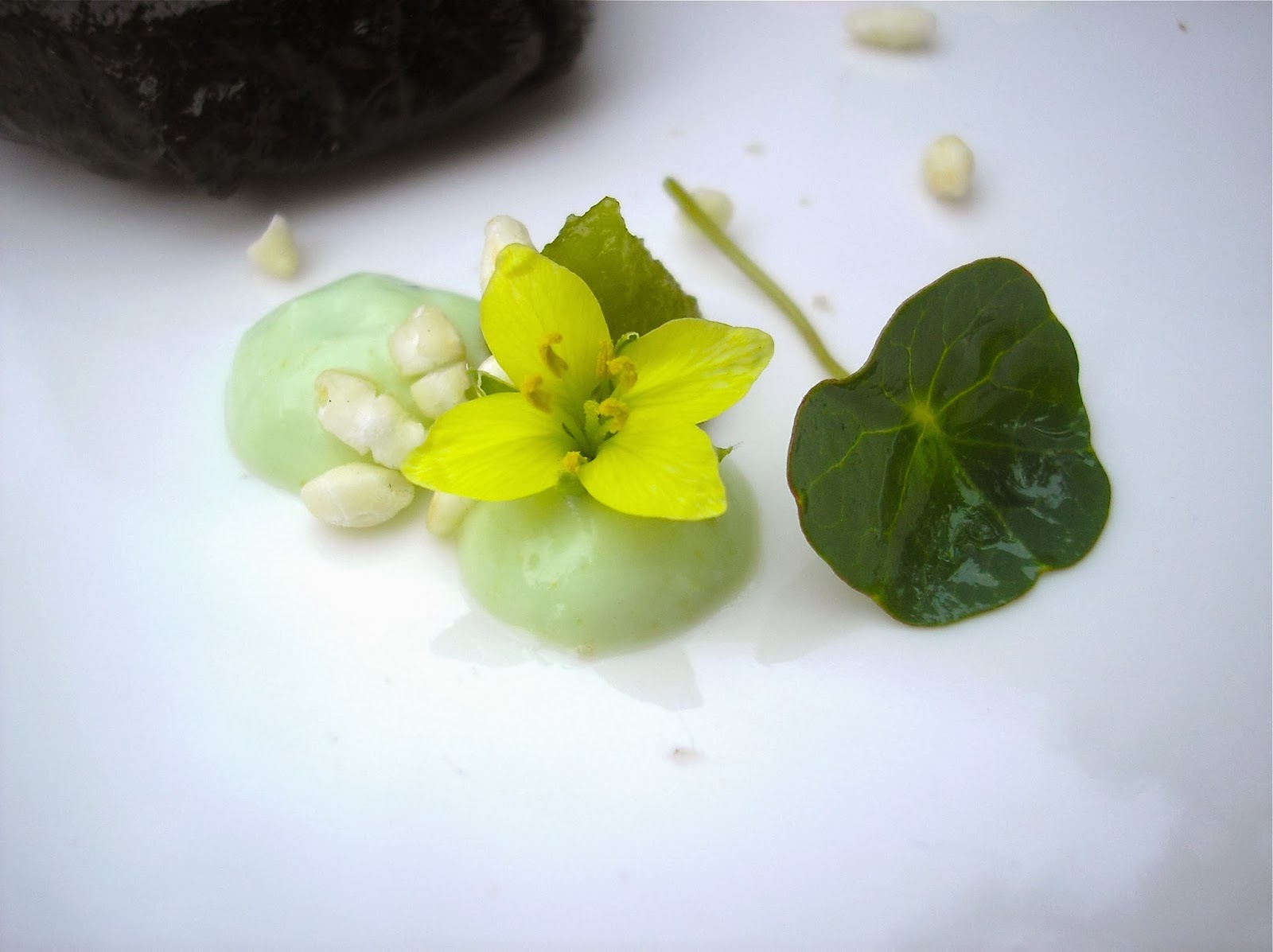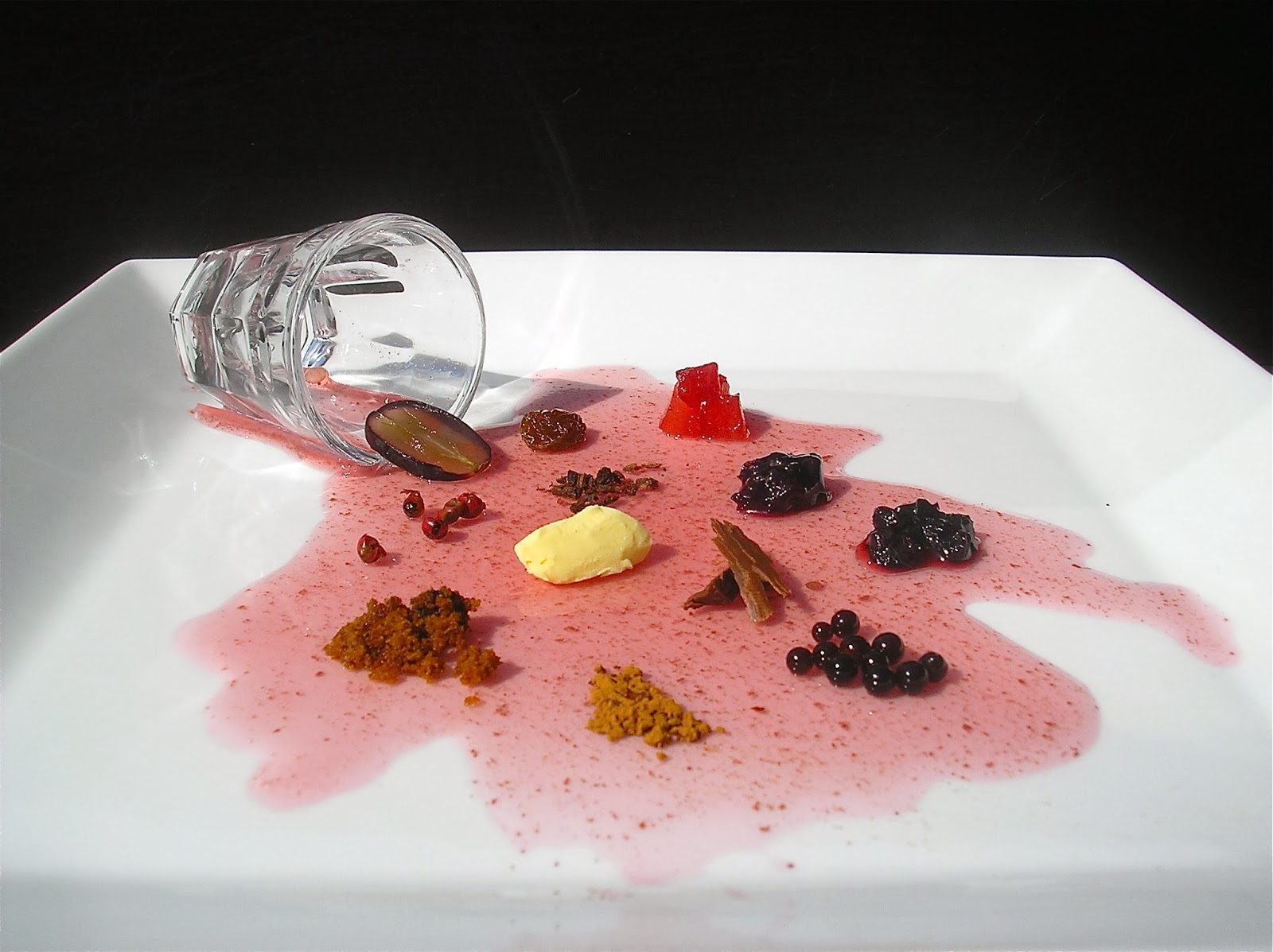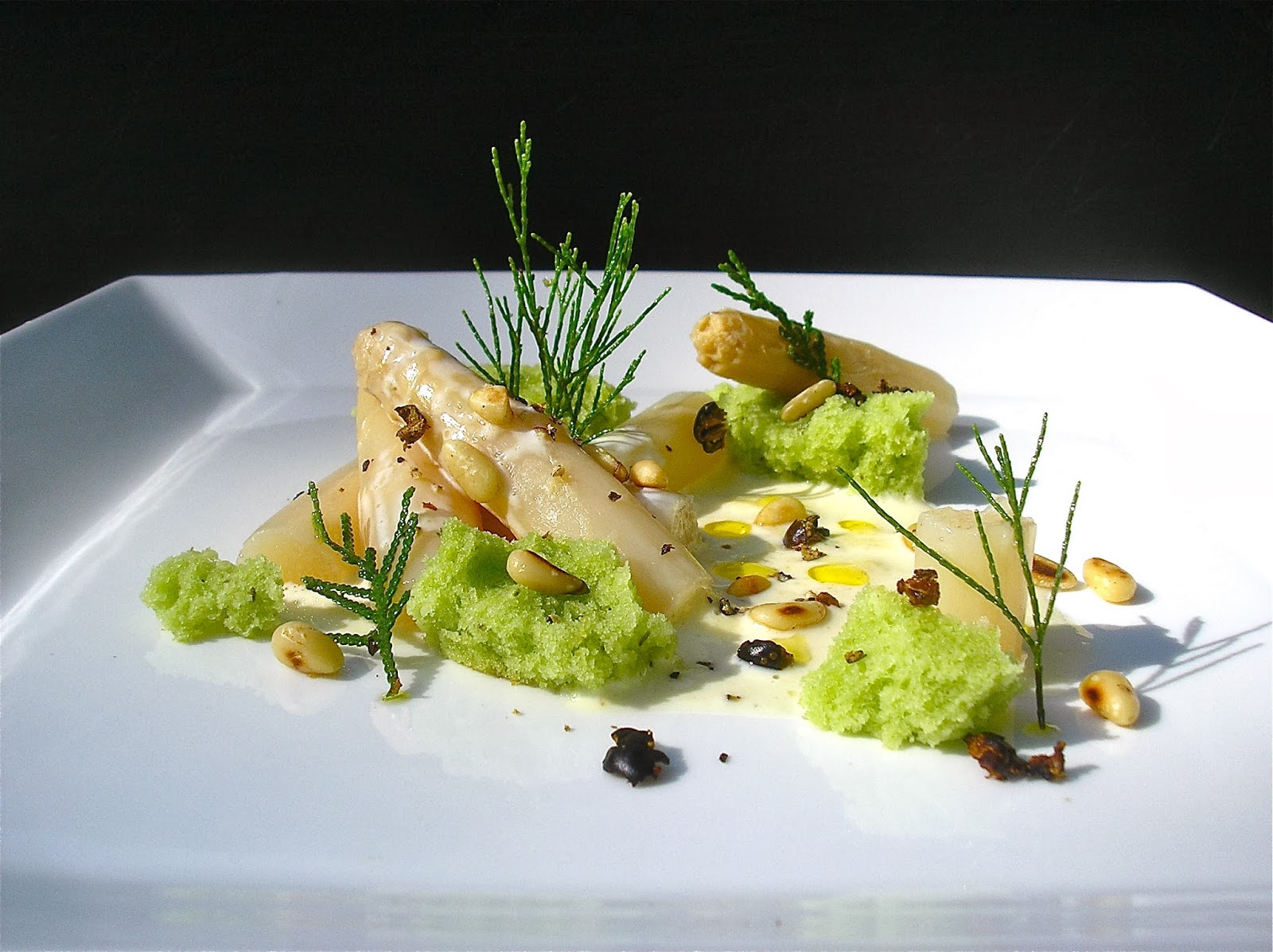 |
Wild caught Sea Scallops wrapped in Nori seaweed , Edamame bean puree , Wasabi paste , Pickled ginger gel , Puffed sushi rice , Nasturtium leaves and Wild rocket flowers. |
This was a simple dish to put together and takes just a few minutes to cook. I began by making the 'Pickled ginger gel' by placing pickled ginger and a little rice wine vinegar and water in a blender, blending to a puree. This was then strained and poured into a saucepan with 1% agar agar and brought to a simmer whisking to dissolve the agar. Once dissolved I removed the pot from the heat and poured the mixture into a mould and allowed it to set. Once the mixture had set I placed the jelly into a blender with a little water and blended to puree of which I strained through a sieve before spooning into a piping bag and placing in the fridge for later plating. Next I placed some edamame beans in salted boiling water and cooked until tender, these were then placed into the blender with a little cream and seasoning and blended to a puree. The 'edamame bean puree' was then placed into a piping bag and chilled before serving. The 'nasturtium leaves' were from the backyard simply dressed in peanut oil and served as is. The 'wasabi paste' was store bought and came in a tube for easier application. To make the 'puffed sushi rice' I just simply put the sushi rice dry into a hot skillet, tossing them around until they start to puff of which they were then removed from the heat and finished off with the residual heat in the pan. The 'wild rocket flowers' came from my backyard and give off colour and a slight mustard flavour. Just before plating I placed the 'wild caught sea scallops' into a skillet over a hot flame and seared both sides until the scallop begins to loose its translucent appearence and becomes opaque, about 2 minutes both sides. These were then removed from the pan and allowed to rest before wrapping each scallop in a trimmed sheet of the 'nori seaweed', dampening the overlap with water to make it stick down these were then transferred back to the hot skillet to be finished off, about another 1-2 minutes each side. The nori scallops were then seasoned with a little sea salt and some toasted sesame seeds.


















































